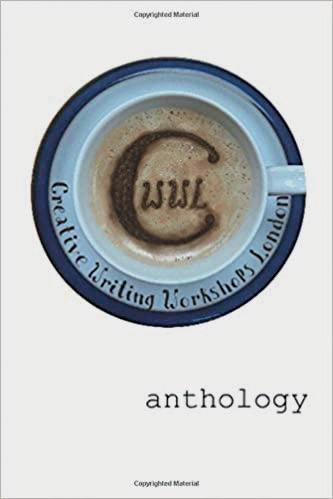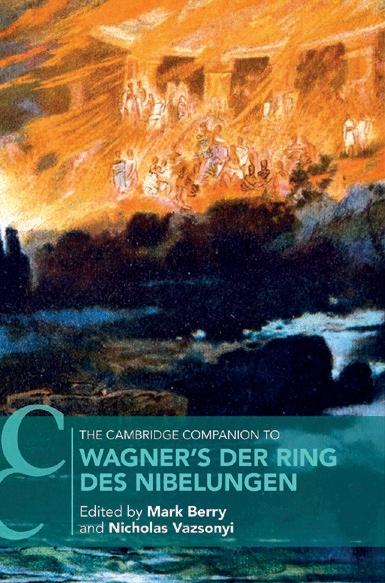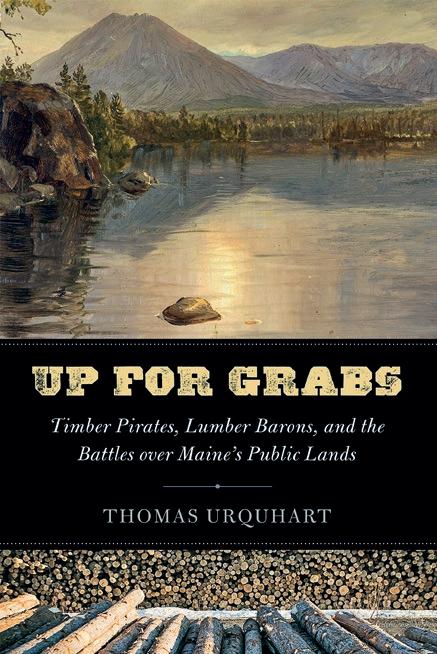
10 minute read
Alumni in Print
BOOKSHELF
An Uneasy Paradise: Living on the Waterways
Advertisement
Louise Tickner (BB, 2001-03)
‘An Uneasy Paradise: Living on the Waterways’ is the culmination of eight years of photographic work and tells the story of the liveaboard boating community at the western end of the Kennet and Avon canal. The photographs give an intimate insight, through the seasons, of this rather private community and are accompanied by interviews, and followed by an essay, that discusses pertinent issues that jeopardise the lifestyle and contextualises them within a wider discussion of the challenges faced by society at large.
The Road to Itacuiaxa in The Creative Writing Workshops London Anthology
Claire-Emily Martin (WW, 2009-11)
A collection of entries for the Creative Writing Workshops London 2020 summer writing competition. The book was transcribed to Braille and has a great number of beautiful illustrations.


The Novels of Justinian, a complete annotated English translation
Translator: D.J.D Miller (QS, 1949-54), Editor: Peter Sarris
The novels comprise a series of laws issued in the sixth century by the famous Emperor Justinian (r.527-65), along with a number of measures issued by his immediate successors on the throne of Constantinople. They reveal the evolution of Roman law at the end of antiquity and how imperial law was transmitted to both the Byzantine East and Latin West in the Early Middle Ages. Crucially, the texts cast fascinating light on how litigants of all social backgrounds sought to appropriate the law and turn it to their advantage, as well as on topics ranging from the changing status of women to the persecution of homosexuals, and from the spread of heresy to the economic impact of the first known outbreak of bubonic plague. This work represents the first English translation of the novels based on the original Greek, and comes with an extensive historical and legal commentary.
Andrew Kavchak (BB, 1976-77)
On 23 August 1939 Nazi Germany and the Soviet Union signed a non-aggression treaty. As part of their agreement, secret protocols delineated their respective spheres of influence over the territory between them. On 1 September 1939 Nazi Germany launched the Second World War by invading Poland from the West. On 17 September the Soviet Union invaded Poland from the East. The two totalitarian powers split Poland between them. Approximately 250,000 Polish soldiers were captured by the Red Army. About 15,000 military officers, police officers and border guards were segregated and interned in three camps: Starobelsk, Kozelsk and Ostashkov.
On 5 March 1940, NKVD Chief Beria provided Stalin with a written proposal to execute the Poles at the three camps as well as thousands of other Polish prisoners in the jails of Western Belorussia and Western Ukraine. Beria described the Polish prisoners as “sworn enemies of Soviet power, filled with hatred for the Soviet system of government”. He proposed to “apply to them the supreme punishment, shooting”. In the operation that followed in April and May 1940, 21,857 Poles were shot by the NKVD and buried in hidden mass graves.
On 22 June 1941, the Germans attacked the Soviet Union. The Soviets then agreed to release the Poles in Soviet captivity and allow General Władysław Anders to assume the command of a Polish Army to be formed on Soviet territory. But where were the officers who were held at Starobelsk, Kozelsk and Ostashkov? Polish efforts to find them were futile as the Soviet authorities dodged the issue and gave evasive answers.
On 13 April 1943, the Nazis announced a gruesome discovery in the Katyn Forest where they found mass graves containing the bodies of thousands of Polish officers from the Kozelsk camp. The Germans claimed the Polish officers were killed by the Soviets. The Soviets responded by claiming that the Nazis had captured and killed the Polish officers in 1941. This “Katyn Lie” would be the official Soviet and Communist narrative on the subject for the next 47 years.
On 13 April 1990 Soviet President Gorbachev provided the Polish Government with documents confirming that the Soviets were responsible for the Katyn Massacre. On 14 October 1992 Russian President Yeltsin revealed the text of the execution order of March 5, 1940, signed by Stalin.
“The Katyn Forest Massacre: An Annotated Bibliography of Books in English” begins with a history of the Katyn Massacre and an overview of the literature on Katyn. The subsequent chapters discuss the authors and contents of some 38 books that have been published over the decades in English about Katyn. Each book contributed something to the evolving literature and general knowledge about the history of the Massacre. Books were written by some prisoners who survived (Czapski and Młynarski), witnesses who were brought to the exhumations (Stroobant and Werth), diplomats and generals who tried to find out what happened to the missing officers (Kot and Anders), family members who were deported to Kazakhstan and Siberia (Adamczyk), researchers and historians (Zawodny, Ciencala, Sanford and Maresch), and authors who believed that raising awareness about Katyn was worthwhile because it might help rectify an injustice (FitzGibbon and Allen). Books written before the Soviet admission of guilt pointed an accusatory finger at the Kremlin. Those written afterward had the benefit of archival revelations that helped shed light on previously unknown details of the NKVD Katyn operation.
The Foreword is by Dr. Alexander M. Jablonski, President of the Oskar Halecki Institute in Canada.
Andrew Kavchak studied political science (M.A., Carleton University) and law (LL.B., Osgoode Hall Law School). His grandfather was among the Polish officers held at Starobelsk and murdered at Kharkov in April 1940 in what has become known as the Katyn Massacre.


Traitor King: The Duke and Duchess of Windsor in Exile
Andrew Lownie (RR, 1980)
Sunday Times bestselling author Andrew Lownie, examines the years following the abdication of Edward VIII when the former king was kept in exile, feuding with his family over status for his wife, Wallis Simpson, and denied any real job.
Drawing on extensive research into hitherto unused archives and Freedom of Information requests, it makes the case that the Duke and Duchess of Windsor were not the naïve dupes of the Germans but actively intrigued against Britain in both war and peace.
Traitor King reveals the true story behind the German attempts to recruit the Duke as a British Pétain; the efforts, by Churchill in particular, to cover this up; the reasons why the Duke, as Governor of the Bahamas, tried to shut down the investigation into the murder of a close friend, and shines light on the relationship between the Duke and Wallis, revealing it to be far from the love story it is often assumed to be.
Lownie’s previous book with Bonnier Books UK, The Mountbattens, was a Sunday Times bestseller and a Waterstones Book of the Year.
Matt Phillips said: ‘Andrew Lownie’s book is an intimate portrait of this powerful couple at odds with the monarchy – it’s a story of love, treachery, murder, cover-ups, vanity, sex and infidelity. The recent explosive revelations surrounding Prince Harry, Duke of Sussex and Meghan Markle have many uncanny parallels with the Windsors’ story from almost a century ago. It’s the perfect moment to be re-exploring this particular part of our national history as it throws further understanding on the themes of freedom and duty, love and family.”
Andrew Lownie said: ‘Few books tell the story of what happened to the Duke and Duchess of Windsor, after they supposedly walked into the sunset, even though Edward had another 36 years to live and his wife 50. It is a game of two halves and often assumed that all the drama was in the first. Traitor King focuses on the years following the Abdication, which are arguably the more dramatic.’’
The Cambridge Companion to Richard Wagner’s Der Ring des Nibelungen
Eds. Mark Berry & Nicholas Vazsonyi (AHH, 1976-78)
The Companion is an essential, interdisciplinary tool for those both familiar and unfamiliar with Wagner’s Ring. It opens with a concise introduction to both the composer and the Ring, introducing Wagner as a cultural figure, and giving a comprehensive overview of the work. Subsequent chapters, written by leading Wagner experts, focus on musical topics such as ‘leitmotif’, and structure, and provide a comprehensive set of character portraits, including leading players like Wotan, Brünnhilde, and Siegfried. Further chapters look to the mythological background of the work and the idea of the Bayreuth Festival, as well as critical reception of the Ring, its relationship to Nazism, and its impact on literature and popular culture, in turn offering new approaches to interpretation including gender, race and environmentalism. The volume ends with a history of notable stage productions from the world première in 1876 to the most recent stagings in Bayreuth and elsewhere.

The Performance Curve
Laura Watkins (LL, 1990-92)
There has always been an unnecessary division between personal career guidance and advice that focuses upon the performance of an entire team or the whole organization.
For the first time, The Performance Curve unites these distinct approaches, interweaving the individual and the collective to produce a bold new holistic guide to improving business performance. Laura Watkins and Vanessa Dietzel draw upon their vast experience and research as consultants and leadership coaches to demonstrate that this unifying approach produces the most effective and sustainable results across the board.
Crucially, organizations are beginning to recognize that long-term strategies and optimized processes can only get them so far. This book demonstrates how the human element is key for making any campaign or initiative successful. Similarly, individual success cannot be achieved within a vacuum – people must consider how they can personally prosper through the opportunities available within their organization.
The book's practical advice on maximizing performance capabilities is underpinned by a robust and unique combination of neuroscience, psychological research and mindfulness. The Performance Curve is an eminently engaging and practical consolidation of the concepts, approaches and tools that Laura and Vanessa have developed over years of expert experience.
To be published September 2021.


Up For Grabs! Timber Pirates, Lumber Barons and the Battles Over Maine’s Public Lands
Thomas Urquhart (BB, 1958-63)
Each year thousands of men and women and families recreate on Maine’s Public Reserved Lands. Most of these visitors know only that the large green areas on the map promise them access to some of the state’s most magnificent places. Very few have any idea how Maine acquired them. Or that, as a conservation success, their acquisition (600,000 acres) more than rivals the celebrated purchase and gift to Maine people of Baxter State Park (210,000 acres) by Governor Percival Baxter.
The history of the Public Reserved Lands goes back to the time when Maine was a part of Massachusetts. Whenever the state sold a township of public land, it reserved 1,280 acres (a township was about 24,000 acres) to be held in trust for the settlement’s future needs, especially religious and educational. Maine inherited this policy when it became a state, adjusting the amount to a thousand acres. According to the Constitution, these Public Lots could not be sold.
When wildland townships remained unsettled, Maine sold the rights “to cut and carry away the timber and grass” on these Public Lots (but not the land). The lumber companies (and subsequently paper companies) managed them as they did their own tracts. These 400,000 or so acres, scattered all over Northern Maine, wrote Great Northern’s John E. McLeod, “sat there giving nobody any trouble until they were discovered in 1973 by certain politicians who wished to raise the state flag over them.”
There followed an extended legal battle, with paper companies and large landowners on one side, and the State on the other. The case went on for ten years and ended with Maine reclaiming its Public Lots. It then consolidated them into Maine’s Public Reserved Lands. Today, some 600,000 acres are under exemplary multiple-use management, for timber, wildlife and recreation.
Up for Grabs tells the story of Maine’s Public Reserved Lands from colonial times to statehood in 1820 to the present. (It is one of the Maine Historical Society’s Bicentennial publications.) With dramatic moments and colourful characters, it provides an engaging and informative history of Maine’s wildlands from exploitation to conservation and sustainable use.










